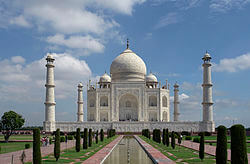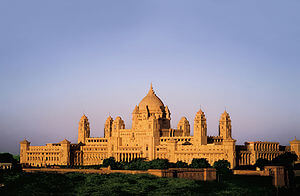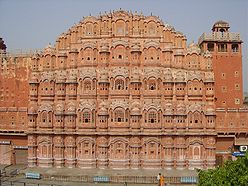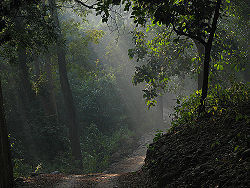About India
India, one of the oldest civilizations of the world, is the home to a large and diverse population that has added to its vibrant character since ages. No wonder it is known as the “Land of several Religions”. It is blessed with a wide variety of climate and soil types which permits the growth of various unique earthy roots, precious woods and traditional crops.
India is a country of 28 states and 7 union territories. It has Delhi as its capital which is called the political hub of the country. Bangalore, the silicon valley of India, is the hubs of almost all major software and BPO companies. Chennai has a broad industrial base in the automobile, computer, technology, hardware manufacturing and health industries. Mumbai, the business capital of India, is the home to the country’s biggest film industry – Bollywood. Kolkata, the commercial capital of East India, is a cosmopolitan city that exhibits a unique blend of combination of culture and technology. Other cities of India not only contribute to its success in their own unique ways but also add colors and essence to the cultural diversity of India.
Travelling to India has been made easy by various domestic and international airports in various cities. Indian Railways connects almost all cities and villages to each other. The areas where Indian railway has not reached yet are connected to the bigger towns and cities by roads. There are numerous private and government bodies that serve the population in various sectors including transport, foods, hotels etc. Most preferred means of transport in India are Buses and Taxis by road, Flights by air and Railways. Some of the major Hotels of India are The Taj Hotels, The Oberoi Grand, Hyatt Regency Hotels, The Lindsay Hotels etc.
 The Taj Mahal is a white Marble mausoleum located in Agra, India. It was built by Mughal emperor Shah Jahan in memory of his third wife, Mumtaz Mahal. The Taj Mahal is widely recognized as "the jewel of Muslim art in India and one of the universally admired masterpieces of the world's heritage."
The Taj Mahal is a white Marble mausoleum located in Agra, India. It was built by Mughal emperor Shah Jahan in memory of his third wife, Mumtaz Mahal. The Taj Mahal is widely recognized as "the jewel of Muslim art in India and one of the universally admired masterpieces of the world's heritage."
In 1983, the Taj Mahal became a UNESCO World Heritage Site. While the white domed marble mausoleum is the most familiar component of the Taj Mahal, it is actually an integrated complex of structures. The construction began around 1632 and was completed around 1653, employing thousands of artisans and craftsmen.
 Umaid Bhawan Palace, located at Jodhpur in Rajasthan, India, is one of the world's largest private residences. A part of the palace is managed by Taj Hotels. Named after Maharaja Umaid Singh, grandfather of the present owners of the palace, this monument has 347 rooms and serves as the principal residence of the erstwhile Jodhpur royal family.
Umaid Bhawan Palace, located at Jodhpur in Rajasthan, India, is one of the world's largest private residences. A part of the palace is managed by Taj Hotels. Named after Maharaja Umaid Singh, grandfather of the present owners of the palace, this monument has 347 rooms and serves as the principal residence of the erstwhile Jodhpur royal family.
Umaid Bhawan Palace was called Chittar Palace during its construction due to its location on Chittar Hill, the highest point in Jodhpur. Ground for the foundations of the building was broken on 18 November 1929 by Maharaja Umaid Singh and the construction work was completed in 1943.
 Hawa Mahal is a palace in Jaipur, India. It was built in 1799 by Maharaja Sawai Pratap Singh, and designed by Lal Chand Ustad in the form of the crown of Krishna, the Hindu god. Its unique five-storey exterior is also akin to the honeycomb of the beehive with its 953 small windows called jharokhas that are decorated with intricate latticework.[1] The original intention of the lattice was to allow royal ladies to observe everyday life in the street below without being seen, since they had to observe strict "purdah" (face cover).
Hawa Mahal is a palace in Jaipur, India. It was built in 1799 by Maharaja Sawai Pratap Singh, and designed by Lal Chand Ustad in the form of the crown of Krishna, the Hindu god. Its unique five-storey exterior is also akin to the honeycomb of the beehive with its 953 small windows called jharokhas that are decorated with intricate latticework.[1] The original intention of the lattice was to allow royal ladies to observe everyday life in the street below without being seen, since they had to observe strict "purdah" (face cover).
Built of red and pink sandstone, the palace is situated on the main thoroughfare in the heart of Jaipur's business centre. It forms part of the City Palace, and extends to the Zenana or women's chambers, the chambers of the harem. It is particularly striking when viewed early in the morning, lit with the golden light of sunrise.
Ellora is an archaeological site, 30 km (19 mi) from the city of Aurangabad in the Indian state of Maharashtra built by the Rashtrakuta dynasty . Well-known for its monumental caves, Ellora is a World Heritage Site. Ellora represents the epitome of Indian rock-cut architecture. The 34 "caves" – actually structures excavated out of the vertical face of the Charanandri hills – being Buddhist, Hindu and Jain rock-cut Jain and Hindu templess and viharas and matha were built between the 5th century and 10th century. The 12 Buddhist (caves 1–12), 17 Hindu (caves 13–29) and 5 Jain (caves 30–34) caves, built in proximity, demonstrate the religious harmony prevalent during this period of Indian history.
The Khajuraho Group of Monuments in Khajuraho, a town in the Indian state of Madhya Pradesh, located in Chhatarpur District, about 620 kilometres (385 mi) southeast of New Delhi, are one of the most popular tourist destinations in India. Khajuraho has the largest group of medieval Hindu and Jain temples, famous for their erotic sculpture. The Khajuraho group of monuments has been listed as a UNESCO World Heritage Site, and is considered to be one of the "seven wonders" of India.
 Jim Corbett National Park—named after the hunter and conservationist Jim Corbett who played a key role in its establishment—is the oldest national park in India. The park was established in 1936 as Hailey National Park. Situated in Nainital district of Uttarakhand the park acts as a protected area for the critically endangered Bengal tiger of India, the secure survival of which is the main objective of Project Tiger, an Indian wildlife protection initiative.
Jim Corbett National Park—named after the hunter and conservationist Jim Corbett who played a key role in its establishment—is the oldest national park in India. The park was established in 1936 as Hailey National Park. Situated in Nainital district of Uttarakhand the park acts as a protected area for the critically endangered Bengal tiger of India, the secure survival of which is the main objective of Project Tiger, an Indian wildlife protection initiative.
The park has sub-Himalayan belt geographical and ecological characteristics. An ecotourism destination, it contains 488 different species of plants and a diverse variety of fauna. The increase in tourist activities, among other problems, continues to present a serious challenge to the park's ecological balance.